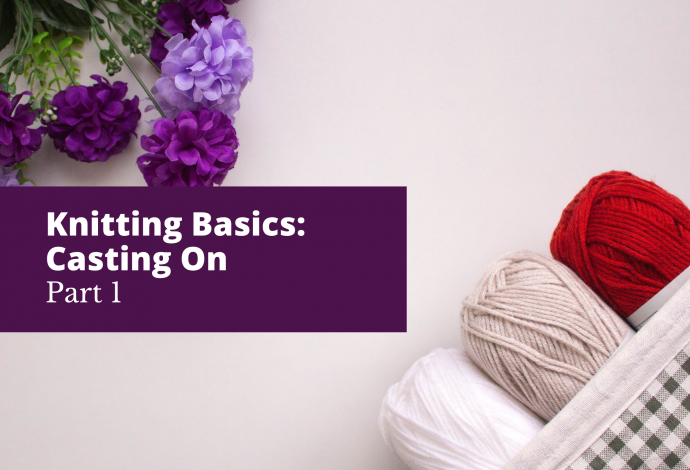Every knitting project, whether simple or advanced, requires you to use any of casting on techniques. Try to master these techniques at home, and next time I’ll focus on some other useful methods such knit-on, cable, tubular, invisible and provisional cast ons. If you like this format of short knitting guides, please let me know down in comments, and I’ll prepare a series of such tutorials, and hopefully videos, who knows!
See you soon! Happy knitting!
There are hundreds of ways to cast on, I am just going to show you the easiest and basic ones.

I figured out that there are a lot of beginners here and from my own experience I remember that casting on is the hardest thing for a beginner to learn. That’s why I decided to prepare a series of practical suggestions and useful tips that will help you get started or master your knitting techniques! I am happy to share all the experience I have in simple small guides. The first thing that every beginner knitter learns how to do is how to cast on their stitches.
Each way of casting on has its strengths and weakness and there is no right or wrong way to cast on. Each way of casting on serves a different purpose. All the methods I am showing here are basic and multipurpose cast ons. You may try all of them and choose the most convenient.
Slip Knot.

The first stitch of most cast-on methods is a slip knot. For some cast-on methods, you must leave a predetermined length of yarn free (a long tail) before working the slip knot. A general guide is to allow a length of approximately three times the planned width of the cast-on edge. For the other methods, only a 20-25 cm length is necessary.
Hold the short end of the yarn in your palm with your thumb. Wrap the yarn twice around the index and middle fingers.
Pull the strand attached to the ball through the loop between your two fingers, forming a new loop.
Place the new loop on the needle. Tighten the loop on the needle by pulling on both ends of the yarn to form the slip knot. You are now ready to begin one of the following cast-on methods.
Tip: Left-handed cast on
Make a slip knot on left needle, leaving a long tail. Wind tail end around right thumb from front to back. Wrap yarn from ball over your index finger and secure both ends between palm and fingers.
Insert needle upwards into loop on your thumb.
Insert the needle downwards into loop on your index finger and draw it through the loop on your thumb. Continue in this way until all stitches are cast on.
Double (Long-Tail) Cast On.

The double or long-tail cast on provides a firm yet elastic edge and is really easy for beginners to learn.
Place a slip knot on right needle, leaving a long tail. Wrap tail over your left thumb, wrap yarn from ball over your left index finger, and secure ends in your palm.
Insert the needle upwards in the loop on your thumb. Then with the needle, draw the yarn from the ball through the loop to form a stitch.
Take your thumb out of the loop on the needle. Continue in this way until all the stitches are cast on.
Double Cast On: The Thumb Method.

Another cast on technique I like is the thumb method, that has almost the same finished look as the double cast on, but I find it a bit simpler.
Make a slip knot on the right needle, leaving a long tail. Wind the tail end around your left thumb. Wrap the yarn from the ball over right index finger and secure both strands in your palms.
Insert the needle upwards through the loop on your thumb.
Using your right index finger, wrap the yarn from the ball over the needle knitwise. Pull the yarn through the loop on your thumb to form a stitch. Tighten the loop on the needle by pulling on the short end. Continue in this way until all the stitches are cast on.
Single (Backwards-Loop) Cast on.

This is the simplest but not the neatest method of casting on. It is a good technique to use when casting on in the middle of raw or teaching children.
Place a slip knot on the right needle, leaving a short tail. Wrap the yarn from the ball around your left thumb and secure it in your palm with your other fingers.
Insert the needle upwards through the strand on your thumb.
Slip this loop from your thumb onto the needle, pulling the yarn from the ball to tighten it. Continue in this way until all the stitches are cast on.






Hi Jackie! Just noticed your comment! Oh my God! How is your hand? I hope it's ok now!
probably permanent sorry about that (metal pin in joint along with arthritis) your double cast on looks good. ring & pinky fingers do not bend so need to figure out how to hold yarn to my palm lol I am working on it. casting on is my biggest trouble Much thanks for your help.